TEMPLE
The temple structure was built in 1970 by traditional Japanese carpenters with the help of our members and friends. Built on the exact spot of the former temple building that also perished in a fire in 1968, the temple was constructed in a unique architectural structure that blended Japanese and Western styles.
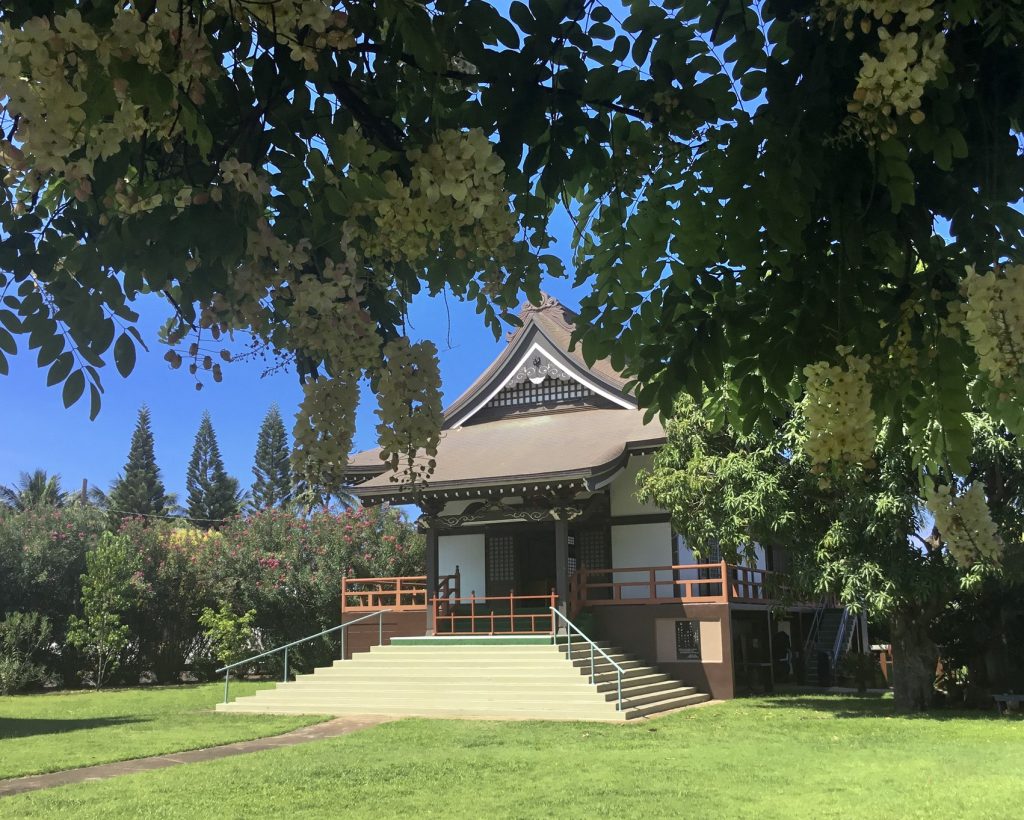
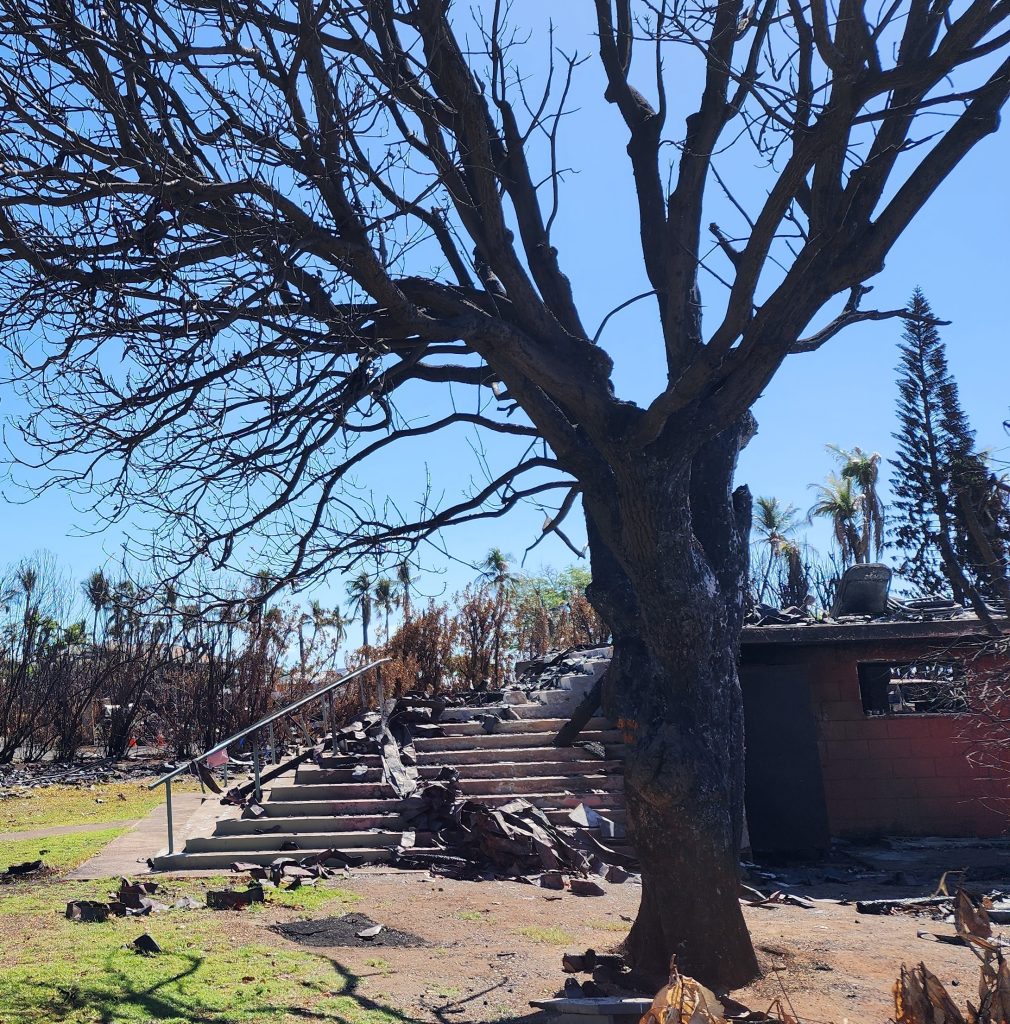
One of the most interesting features was the solid copper shingles that covered the rooftops of both the Temple and the Pagoda. All the shingles were individually hand-made and were interlocked on all four sides, forming a solid copper sheeting. Also, the wooden beams were built using a traditional construction allowing them to interlock.
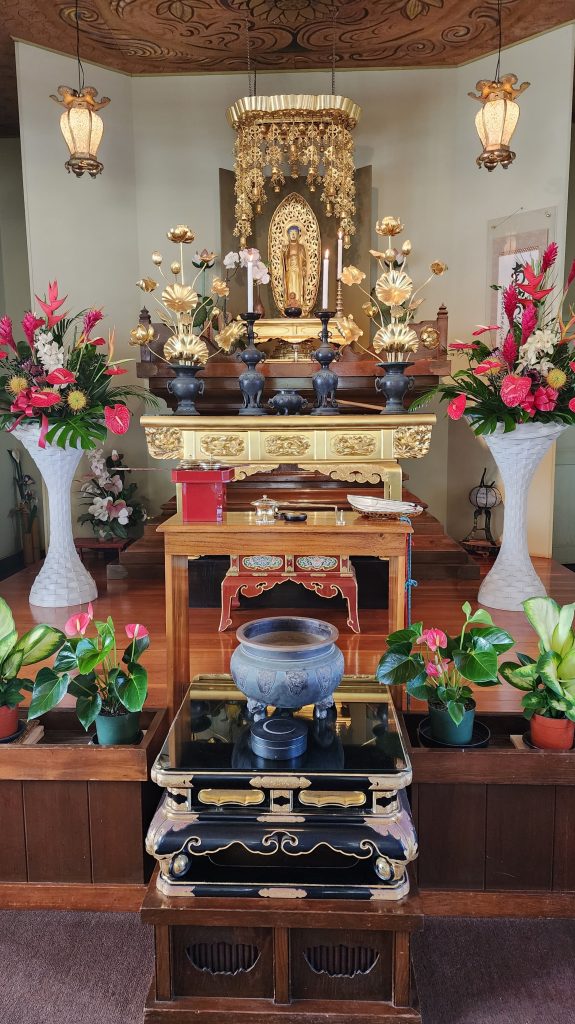
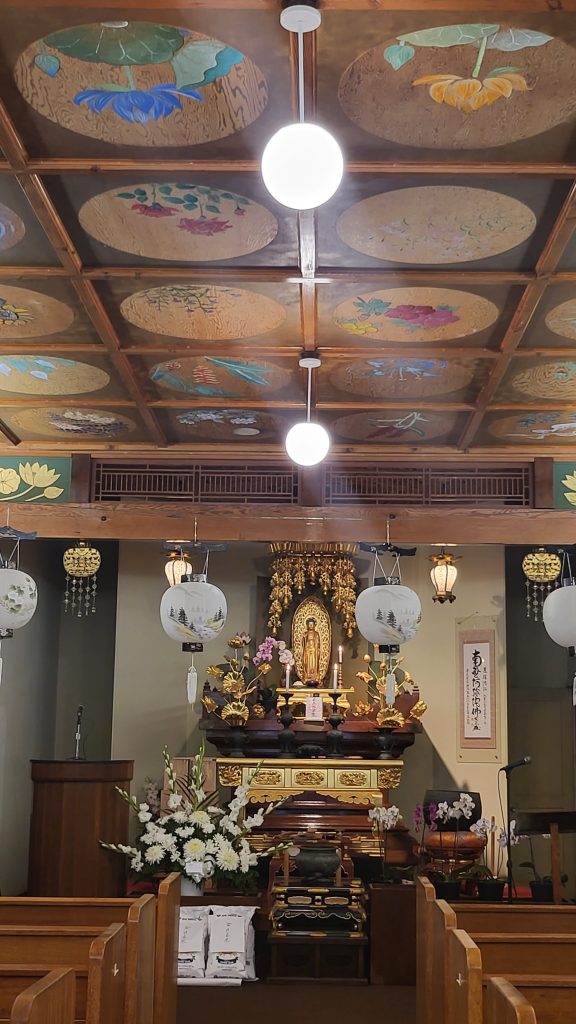
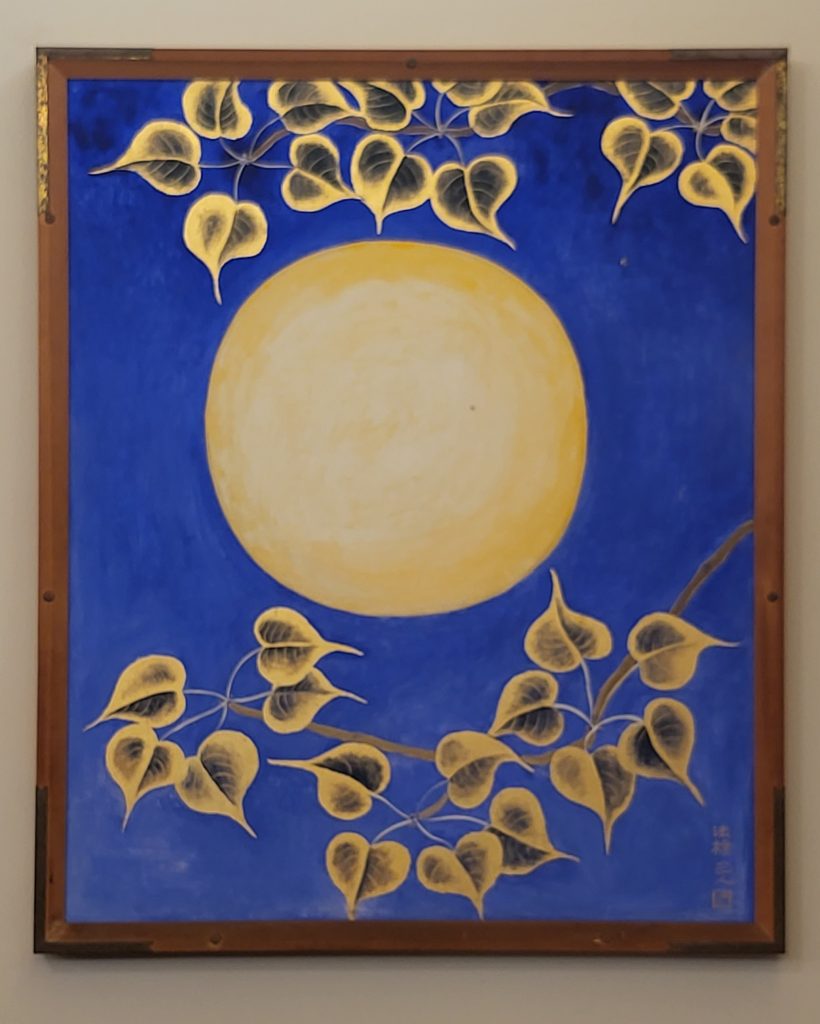
The interior of the temple was painted by the renowned Japanese artist Iwasaki Hajin (1917–2010). In 1974, he created five large Buddhist wall paintings (four depicting the historic Buddha’s life and one of Amida Buddha’s welcoming descent). In later years, Mr. Iwasaki painted sixty floral ceiling paintings, as well as a lotus pond in the inner sanctuary above the altar, all of which completely adorned the temple ceiling. He also produced two paintings depicting the dream encounter of our founder Saint Honen (1133–1212) with the Chinese Pure Land Master Shantao (6 l 3–681), near the front entrance of the temple, and a White-Robed Kannon (Avalokiteshvara) in a back alcove.
Inside the temple, five outstanding Buddhist paintings adorn the walls. These were painted in 1974 by the renowned Japanese artist Iwasaki Hajin. In later years, Mr. Iwasaki painted beautiful floral ceiling paintings and produced two paintings depicting the dream of Saint Honen (1133-1212) meeting the Chinese Pure Land Master Shantao (613-681).
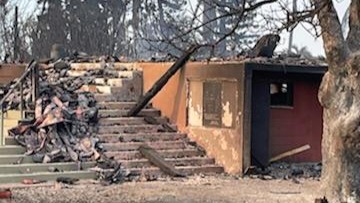
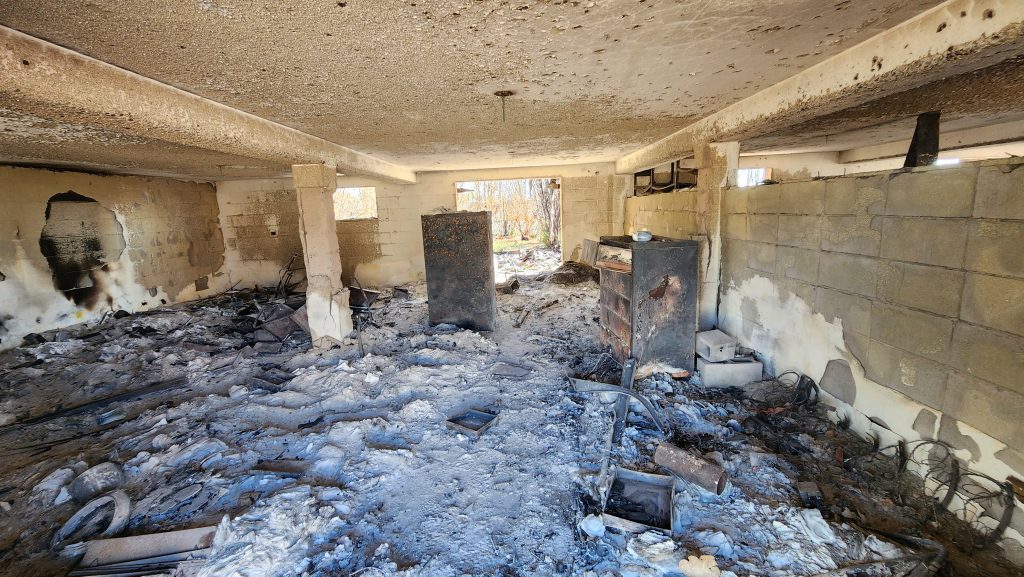
Temple and Minister’s Offices
THE GREAT BUDDHA (DAIBUTSU)
The 12-foot tall copper and bronze statue of Amida Buddha is the largest of its kind outside Japan. Cast in Kyoto, Japan between 1967 to 1968, the statue weighs approximately three and a half tons. The Great Buddha was dedicated in June 1968, to commemorate the Centennial Celebration of the first Japanese immigrants to arrive in Hawai’i.
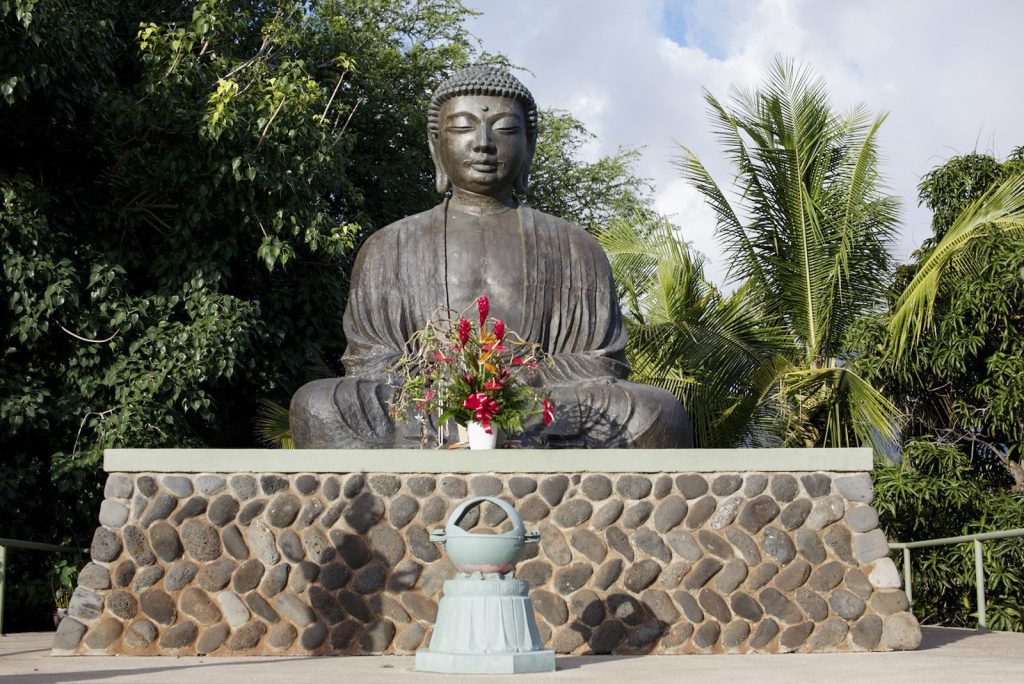
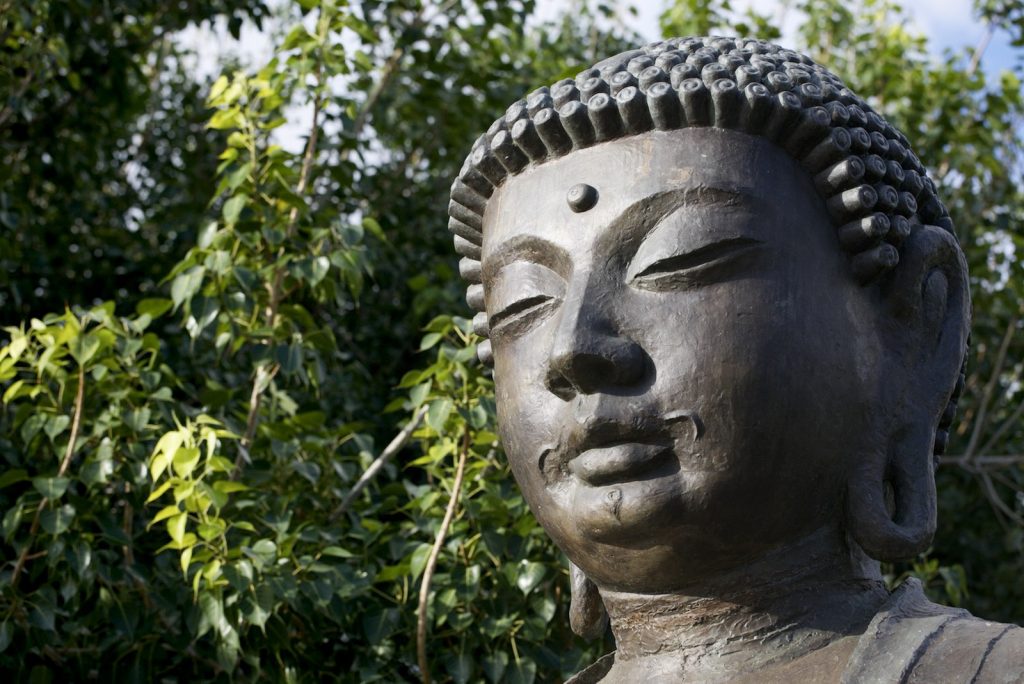
PAGODA (SANJŪ NO TŌ)
According to Buddhist legend, after the historic Buddha Shakyamuni entered Nirvana, his body was cremated at Kushinara. Seven of the neighboring rulers, under the leadership of King Ajatasatru, demanded the ashes be divided among them. At first, the king refused their demands and a dispute ensued, threatening to end in war. But a wise man named Dona intervened and the crisis passed. The ashes were divided and enshrined in eight great stupas in India. The ashes of the funeral pyre and the earthen jar that contained the remains were given to two other rulers to be likewise honored. Because of the enshrinements, followers came to worship and pay homage to these stupas, also called pagodas, which later became a symbol of the spiritual image of the Buddha.
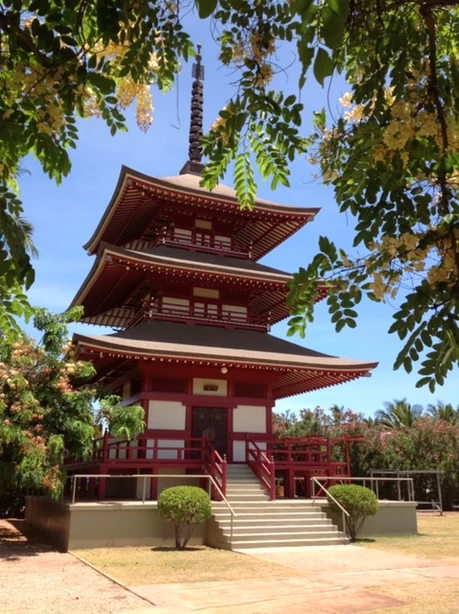
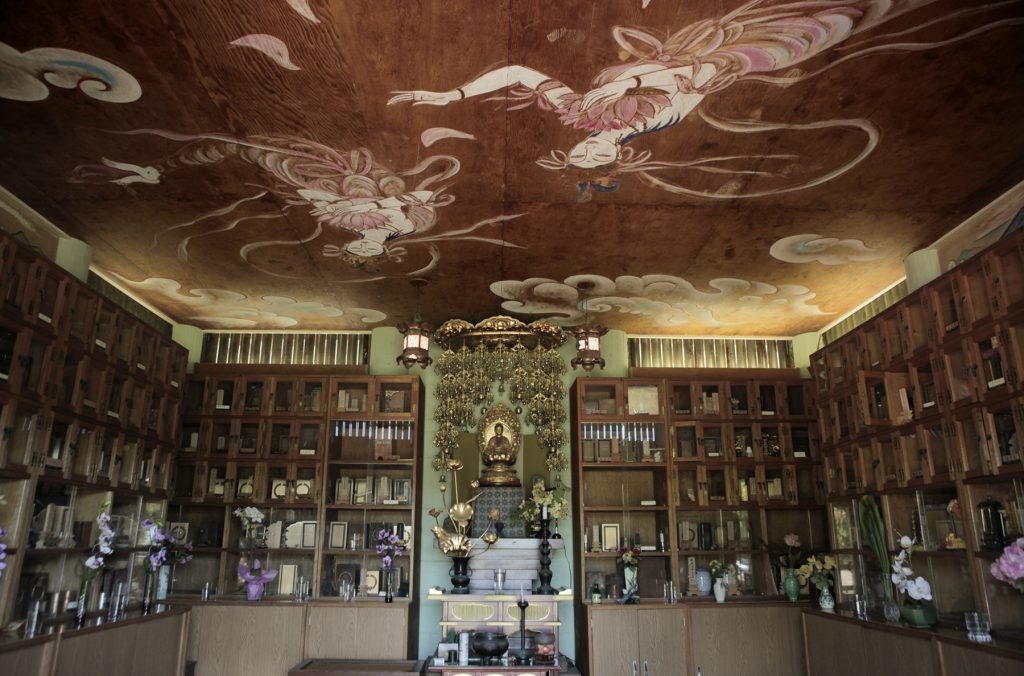
Our three-tiered Pagoda stood approximately 90 feet high at its tallest point. The covering of the roof was made of copper tiles like the Temple. The two top tiers were mostly ornamental and served to balance the tall spire of the Pagoda. The first tier contained an altar with a wooden seated Amida Buddha image and niches to house the urns of our late members and ancestors. The ceiling of this tier was painted with two celestial beings by the Japanese artist Iwasaki Hajin who painted the walls and ceiling of the Temple.

BELL TOWER
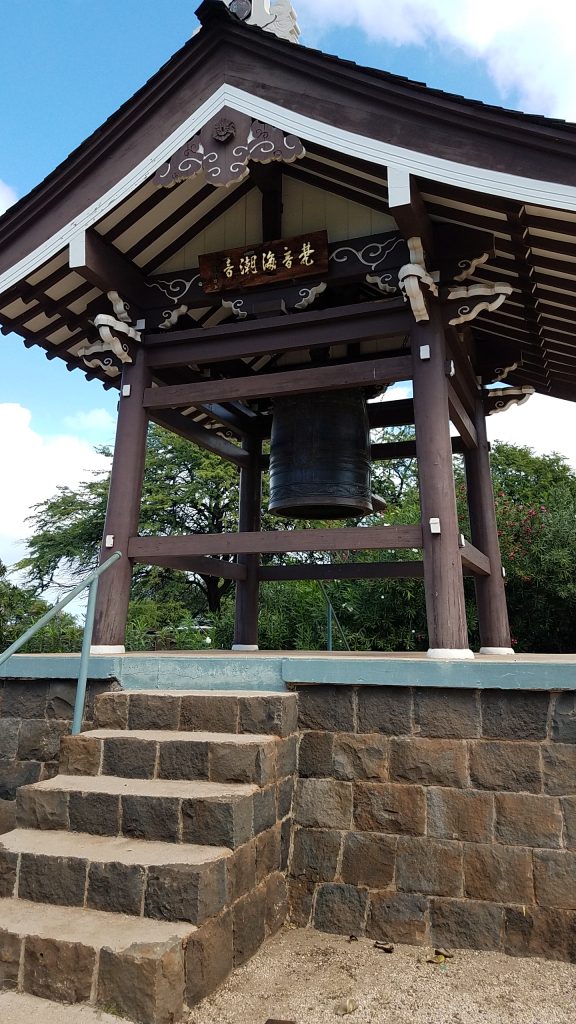
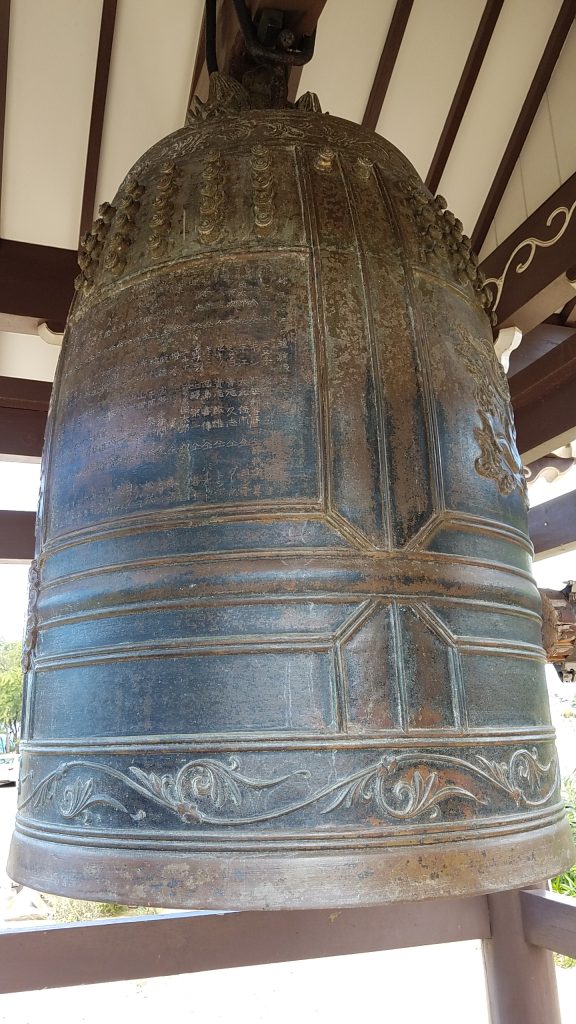
Our bell was rung eleven times each evening at 8 o’clock.
The first three rings signified the Three Treasures of the Buddha, Dharma(Teachings) and Sangha (Community).
The next eight rings represented the Eight-Fold Pathway to Righteousness:
– Right Understanding
– Right Purpose
– Right Speech
– Right Conduct
– Right Livelihood
– Right Endeavor
– Right Thought
– Right Meditation
Made of bronze, the temple bell weighs approximately 3,000 pounds. The inscription, cast in Chinese characters, facing the ocean read: “Imin Hyakunen no Kane” (The Centennial Memorial Bell for the First Japanese Immigrants to Hawaii). On the other side are the characters “Namu Amida Butsu”, which means “Save me, Amida Buddha.” Also inscribed are the names of the temple members who contributed to the making of the bell.
On New Year’s Eve night, members and friends come and take a turn to ring the bell 108 times to dispel our countless bonno or evil passions, in the New Year’s Bell Ringing rite (Joya no kane).
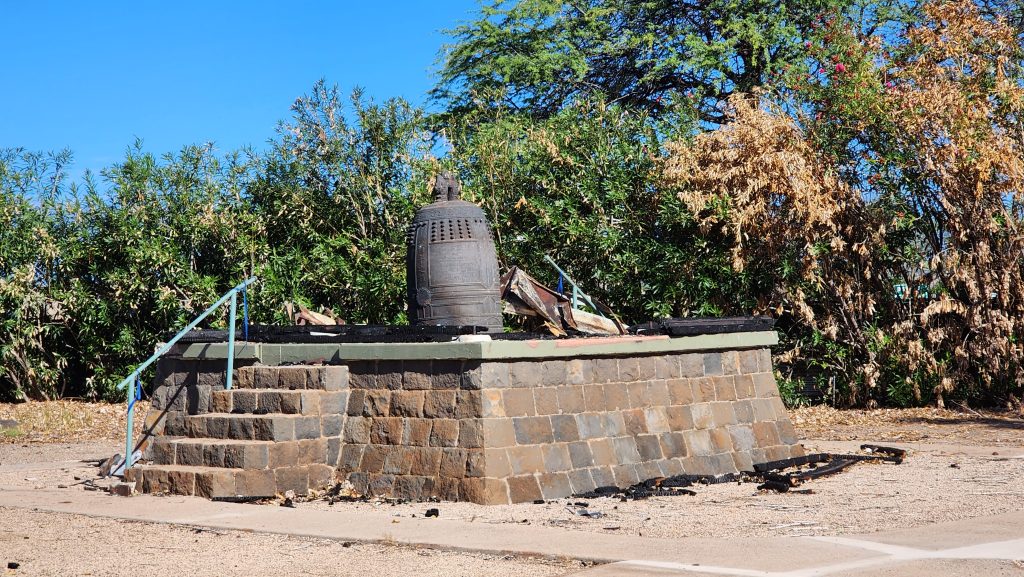
Lahaina Jodo Mission is a tax-exempt 501(c)(3) charitable organization recognized by the IRS, and all donations are fully tax deductible in accordance with IRS regulations. Federal Tax ID # 99-0267760.
